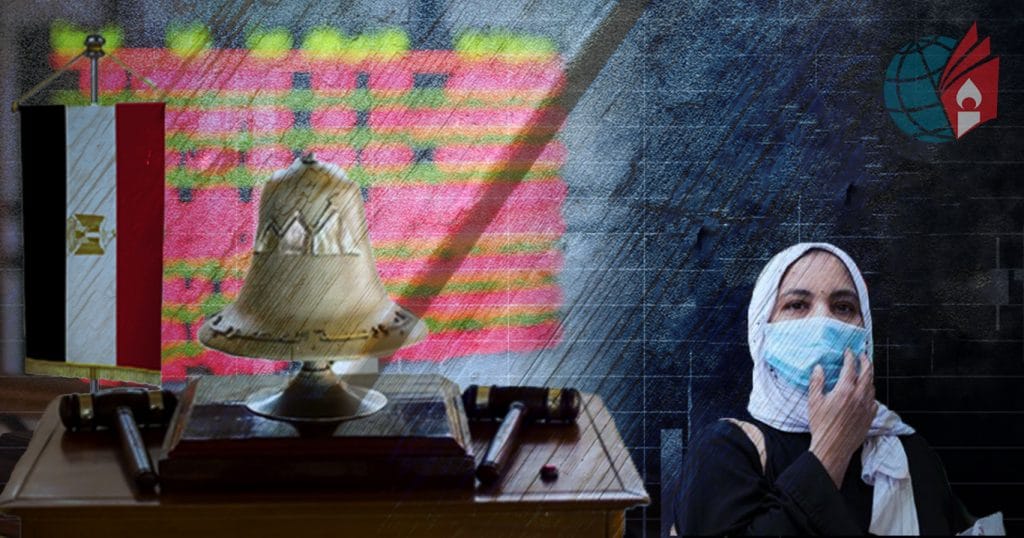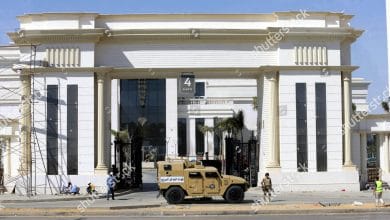
COVID-19 and Structure of Int’l Order – Dimensions & Implications
On the eleventh of March 2020, the United Nations World Health Organization (WHO) declared coronavirus, known as COVID-19, “a global pandemic” after it moved from the People’s Republic of China, where it first appeared in December 2020, to spread in tens of countries worldwide, infecting and killing hundreds of thousands of people. This prompted various countries and international organizations to adopt many precautionary and preventive policies in the context of facing the pandemic and working to limit its spread.
With the outbreak of COVID-19 and aggravation of its dangers and damages that have not stopped at the health aspects only, it is important to explore the repercussions of this pandemic on the structure of the international order and its main pillars upon which international relations are based, in attempt to answer the question: Would this pandemic reshape this order and these pillars?
First: The International Order: Concept and Pillars
The “international order” approach is based on the fact that international politics is created and developed within the framework of a specific international order, and proceeds from its main components. Hence, the analysis of international policy at a certain historical stage requires recognition of what these elements are and how they interact, based on four main pillars: international units, international structure, international institutionality, and international operations[1]:
(1) International units:
The international units include actors that perform certain roles within the order, as each pattern involves two or more actors in a state of interaction, as well as sub-patterns interacting with each other or with the overall pattern or order.
The starting point in understanding international politics is to know the active political units in the international order, including the new forces that have emerged on the international stage, and the forces that have disappeared. The number of international actors influence international politics via two levels, directly through the impact on the foreign policies of actors, and indirectly through the impact on the stability of the international order.
(2) The international structure:
The structure is an organizational concept that is concerned with arranging the inter-relations of the international order units, which are determined according to how to distribute potentials – economic resources, as well as political orientations and values – among different units of the international order, and the extent of correlation between these units. Within the framework of the international structure, the shape of the international order is determined, whether it is unipolar, bipolar, or multipolar.
(3) International Institutionality:
Institutionality means building stable and reliable patterns for the practice of various activities, i.e. endorsing a set of rules, customs and procedures accepted by actors as a legitimate framework for exercising activity over a period of time. This means that the institutional level of the international order is concerned with existence of acceptable international rules, frameworks and norms to practice various international activities; and this includes availability of effective international organizations, i.e. regulatory institutions, international legal frameworks for the practice of international relations.
(4) International operations:
International operations refers to the movement of international units to achieve their external goals, as they represent the dynamic side of the international order, constituting a set of successive interrelated activities carried out by international units to achieve their goals within the framework of certain rules.
The international order includes a huge group of international operations that differ in terms of what they are, and their centrality, which ranges from extreme forms of cooperation to the most extreme forms of conflict[2].
Second: The 20th century pandemics and their repercussions:
The twentieth century has witnessed outbreak of many pandemics at various intervals, mainly:
1- The Spanish flu pandemic:
The 1918 Pandemic (H1N1 virus), also known as the Spanish flu pandemic started in the fall of 1918 in the United States, and spread to Europe and various world countries, where the number of victims exceeded 50 million in less than two years, i.e. three times those who were killed in the First World War that claimed the lives of 16 million between 1914 and 1918.
2- The Asian Flu pandemic:
The first wave of the 1957 flu pandemic (NCBI), known as the Asian Flu pandemic, appeared in China in 1957 and then moved to the United States, Britain, Singapore and various world countries, where the number of victims reached 4 million in 1958.
3- The Hong Kong flu pandemic:
The 1968 flu pandemic (or category 2 flu pandemic), known as the Hong Kong flu pandemic, started in China in July 1968 and lasted until early 1970. Within just two weeks of its emergence, 5 million infected cases were reported in South and Southeast Asia (China, India, the Philippines) and Australia, then it moved to the United States, Britain, and many European and African countries, claiming the lives of nearly two million people.
4- The HIV/AIDS pandemic:
The Human Immunodeficiency Virus (HIV/AIDS) pandemic, appeared in June 1981 in the United States; and in 1983 it broke out in Africa. The pandemic was described by the United Nations HIV Program as the deadliest pandemic in the modern era, where it infected about 78 million people and killed nearly 39 million worldwide.
5- The SARS-CoV:
The Severe Acute Respiratory Syndrome (SARS), known as SARS-CoV appeared in November 2002 in southern China, then moved to Vietnam, Singapore, Taiwan and other Asian countries, and by July 2003, the virus had infected about 10,000 people and claimed the lives of 1,000 others worldwide.
6- Ebola virus:
The Ebola virus disease (EVD), known simply as Ebola appeared in the Democratic Republic of the Congo in 1976, near the Ebola river, which it was named after; and in December 2013, this epidemic reappeared in Guinea and spread to Liberia and Sierra Leone, and then to Nigeria and Senegal, causing the death of about 6 thousand people. Then, in 2018, it reappeared in the Democratic Republic of the Congo, killing 2,200 people.
Third: COVID-19 pandemic – outbreak and confrontation
The coronavirus pandemic started from China late December 2019, and then spread in most world countries, until it was declared by WHO as “a global pandemic” on March 11, 2020. The following table shows the list of the 10 largest world countries in terms of the number of infected cases and deaths until March 23, 2020 (1:30 am):
| Country | Infected Cases | Deaths | Recovered |
| China | 81,054 | 3,261 | 72,440 |
| Italy | 59,138 | 5,476 | 7,024 |
| US | 32,356 | 414 | 178 |
| Spain | 28,603 | 1,756 | 2,125 |
| Germany | 24,852 | 94 | 266 |
| Iran | 21,638 | 1,685 | 7,635 |
| France | 16,018 | 674 | 2,200 |
| Korea | 8,897 | 104 | 2,909 |
| Switzerland | 7,474 | 98 | 131 |
| Britain | 5,683 | 281 | 93 |
| Total | 335,403 | 14,611 | 97, 636 |
Source: worldometers.info
Countries have varied in repercussions of the spread of the pandemic, as well as the policies for facing it, starting with calls for public hygiene and adoption of a number of precautionary measures, up to imposition of isolation and quarantine policies and a complete curfew in some regions and even countries, where flights entirely stopped among most world countries and many countries announced allocation of huge budgets to face the repercussions of COVID-19 pandemic: as China announced pumping $175 billion, the states one trillion dollars, including issuance and disbursement of checks worth $250 billion for citizens[3], the European Union 750 one billion euros, Britain 30 billion pounds sterling, Italy 25 billion euros, France 4 billion euros, Spain 3.8 billion euros; while Germany announced adoption of a supplementary budget of 150 billion euros, within the framework of a larger financing package to confront the virus[4]. In the Arab world, Kuwait announced pumping $33 billion, Algeria $31 billion, the UAE $27 billion[5], Qatar $25 billion, Saudi Arabia $32 billion[6], and Egypt about $6.5 billion. The International Monetary Fund also announced allocation of $15 billion in emergency aid to tackle the coronavirus[7].
Furthermore, the US administration under Trump announced on 18 March 2020 activation of the Defense Production Act of 1950, known as the Wartime Law which confers upon the American President a broad set of authorities to influence domestic industry in the interest of national defense, with the use of all government resources, including the American army resources to counter the coronavirus outbreak, including expansion of production of face masks and protective equipment, as well as supporting laboratory tests aimed at production of medical vaccines for fighting the virus[8].
Fourth: COVID-19 implications for structure of the international order
Following the changes and developments witnessed by the structure of international order after the emergence of the coronavirus, and then declaring it an international pandemic by WHO, a number of basic repercussions can be monitored as follows:
1- Repercussions on the international units:
- Reinforcing the role of the national State and consolidating its citizenship values, in light of the escalation of the precautionary measures adopted by world countries, and the policies of quarantine, lockdown and isolation adopted by governments, and even the reliance of many of them on security and military institutions and bodies to enforce these measures, and enhance their ability to deal with long periods of self-economic isolation, in the face of the idea of economic globalization, even temporarily. It is expected that some governments will seek to preserve the powers and authority they have acquired even after the crisis ends, to tighten their grip in the face of community organizations and the private sector, especially after the crisis highlighted the need for strong and capable national health sectors that have the potentials, capabilities and powers necessary to confront such crises.
- The pandemic exposed the fragility of political leaders of actors in the structure of the international order, particularly in the United States, Britain, France, Germany and Italy, where they appeared unable to act or control developments of events, although the virus did not spread in these countries until after almost two months of its spread and exacerbation of its effects in China, a period that, if well managed, would have warranted further preparation and precautions, not bullying against China, and using the pandemic as an opportunity to avenge it politically and economically.
- The crisis management revealed a decline in what might be called the world’s “international trust” in the US administration, in view of the Trump administration’s behavior, which has been based on the prevailing of narrow self-interests at the expense of the overall interest of the world, whether by Trump’s focus on attacking China and describing the virus more than once as the “Chinese virus”, or his call upon a number of German scientists and experts specializing in facing viruses to move to live in the United States, rather than enhancing common experiences and expertise, which sparked a political crisis with Germany.
- The crisis highlighted the importance of reviewing the US national security strategies which emphasize unilateralism, storming alliances and regional and international organizations, since the 2002 strategy and its successive amendments in 2006, 2010, 2015, 2018, as there are crises and disasters that no single power in the world, whatever its potentials and capabilities may be, can face alone.
2- Implications for the international structure:
- Given the historical experiences of pandemics and their repercussions on international relations during the twentieth century, the coronavirus pandemic will not lead to a fundamental transformation in the structure of international relations and the shape of the international order, which will remain unipolar in the foreseeable period, dominated by the United States, with continued confliction on international interactions In light of the mutual accusations between China and Iran on the one hand and the United States on the other, of responsibility for spreading the virus.
- The transfer of power and influence from the West to the East after the successes of the countries of Southeast Asia, China, South Korea and Singapore in fighting the virus, with indicators that exceeded the major European countries such as France, Britain, Germany, Italy, and even the United States itself.
3- Implications for international institutionality:
- The crisis highlighted the importance of the role played by specialized international and regional institutional frameworks, both in monitoring the crisis and analyzing its dimensions, providing accurate description and interpretation of it, and proposing plans and procedures for managing it, and even participating in implementing some aspects of these plans and actions, such as what the World Health Organization and the United Nations and its specialized branches, as well as national institutions and bodies specializing in disaster and crisis management.
4- Implications for international operations:
- The policies of international isolation, lockdown and other precautionary measures are likely to entail more negative repercussions on social and economic conditions in many countries, amid decreased economic activity and increased tension and internal strain, especially in countries that basically suffer from major economic crises, with fragile health care infrastructure; and the danger can be exacerbated in countries with high population density, such as Iran, Sudan, Iraq, Syria, Yemen, Iran, Bangladesh, and others.
- The crisis may push many international institutions, especially economic institutions, to reconsider multi-step supply chains and work to reduce them, through mergers and rebuilding, to limit the highly complex international links that the crisis has revealed, with winding up many branches in the countries where the pandemic broke out.
- The isolationist policies adopted by countries in the face of the coronavirus do not mean collapse of cooperative approaches in the structure of the international order, because these policies came within the framework of a collective vision to prevent the virus spread and reduce risks; however, there will be reviews for some of these approaches, in consistence with the economic and social repercussions of the crisis .
- The crisis revealed the importance of the role that “health diplomacy” can play in the transformation in the nature of relationship between donors and recipients, and emergence of new types of health alliances, due to the pandemic and its rapid spread, where this type of diplomacy extends to new spaces, includes different actors and levels , and combines the advantages of bilateral diplomacy and multilateral diplomacy, within the framework of regional and international organizations[9].
- The coronavirus pandemic has imposed a global crisis that the world has almost not seen since the end of the Second World War, which highlighted the need for interaction, interdependence, sharing, and mobilizing all efforts, potentials and capabilities for facing it, given that the effects and repercussions did not exclude a country or a people. Budgets exceeding $5 trillion were allocated until mid-March 2020 for confrontation of the pandemic, by the most affected countries and the most aware of the magnitude of the likely danger threatening them.
- Enhancement of cooperative approaches in international relations requires provision of a set of basic requisites, most notably: setting political, international and national differences aside, exerting joint efforts in facing the pandemic, and lifting sanctions and political or economic blockades imposed by some countries against certain countries, regimes and groups, or at least freezing them, in order to overcome this crisis, especially in cases of countries and regions that suffer from the greatest repercussions of the outbreak of the virus such as Iran, Venezuela, Cuba, North Korea, and the Gaza Strip, that need massive medical and humanitarian assistance in facing these repercussions, in addition to working to halting all military operations and civil wars that drain the potentials and capabilities, after everyone has become vulnerable to greater dangers, especially in countries such as Libya, Yemen, Syria and Iraq[10].
- The crisis has led to a decline in political and media, as well as economic, interest in many regional and international conflicts and crises, such as the situation in Syria, Libya, Yemen, Egypt, Palestine, Iraq, the Iranian-American crisis, and the Russian-Saudi oil war; and it suffices that an event of the size the political coup in Saudi Arabia and the arrest campaign that took place in March 2020, did not find its worthy political and media attention, compared to the overwhelming interest in the COVID-19 pandemic and its repercussions.
Footnotes
[1] Dr. Mohamed El-Sayed Selim, Development of International Politics in the 19th. and 20th. Centuries, Cairo: Faculty of Economics and Political Science, 2002, pp. 11-22.
[2] Dr. Essam Abdelshafy, International Politics Diploma, International Relations Academy (IRA), Turkey, 2019, pp. 3-9
[3] A US $1 trillion plan to support economy in the face of the epidemic, BBC Arabic website, published on March 18, 2020, visited on March 22, 2020, Link
[4] Comments by German Finance Minister Olaf Scholz, Reuters 21 March 2020, Link
[5] On March 21, the UAE approved an additional 16 billion dirhams ($4.36 billion) for a total stimulus package of 126 billion dirhams to counter the coronavirus outbreak to support small and medium-sized projects, and to ensure implementation of infrastructure projects. Source: Reuters, UAE cabinet approves additional 16 bln dirhams stimulus package, published on March 22, 2020, visited on March 22, 2020, Link
[6] Al-Sharq Al-Awsat Saudi newspaper, Saudi Arabia reveals an emergency budget to face potential coronavirus repercussions, No. 15089, published on March 21, 2020, visited on March 22, 2020, Link
[7] Al-Hurra website, Billions of dollars .. Learn about the budgets allocated to combat “Corona” in Arab World and internationally, published on March 16, 2020, visited on March 22, 2020, Link
[8] Arabic CNN, Trump announces activating the Defense Production Act in the United States to confront Corona, published on March 18, 2020, visited on March 22, 2020, Link
[9] Emma-Louise Anderson, African Health Diplomacy: Obscuring Power and Leveraging Dependency through Shadow Diplomacy, International Relations, Vol. 32, No. 2, 2018, pp. 194-217
[10] Dr. Abdel Sattar Qasim, Corona’s Implications for International and Human Relations, Al-Rai Al-Youm newspaper, published on 22 March 2020, visited on 22 March 2020, Link

Repercussions of the Spread of COVID-19 on Egyptian Economy




